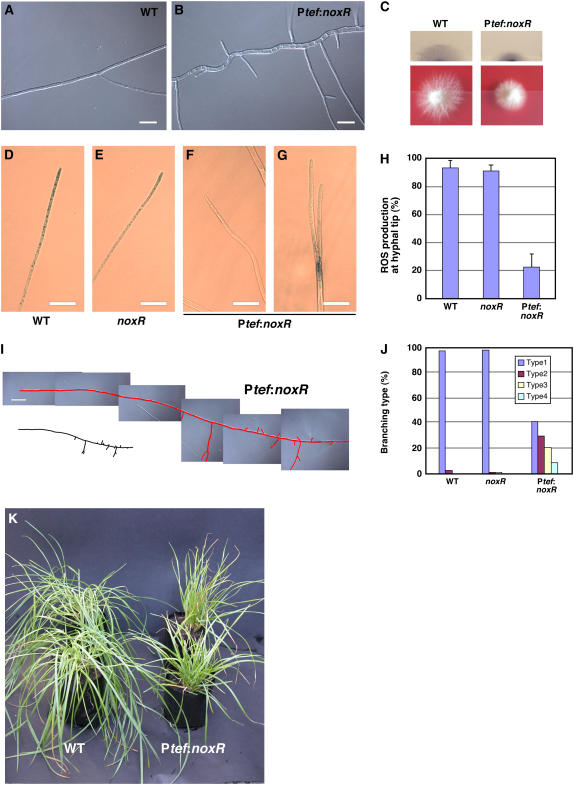Figure 7.
Axenic Culture and Symbiotic Phenotype of a noxR-Overexpressing Strain of E. festucae.
(A) and (B) Light micrograph images captured with DIC of E. festucae wild type (A) and E. festucae Ptef:noxR strain PN2490 (B) growing on PD agar medium for 5 d. Bars = 20 μm.
(C) NBT staining and colony morphology of E. festucae wild type and E. festucae Ptef:noxR on PD agar medium after 7 d.
(D) to (G) Light micrographs showing localized production of ROS (superoxide), as detected by NBT staining, in the wild type (D), noxR mutant strain PN2497 (E), and E. festucae Ptef:noxR strain PN2490 ([F] and [G]). Bars = 20 μm.
(H) Frequency of ROS production at growing tip of hyphae from the wild type, noxR mutant, and noxR-overexpressing strains grown on PD agar medium for 7 d. Values are given as means with sd (n = 3 experiments, at least 84 hyphal tip/genotypes were analyzed for each experiment).
(I) Light micrograph image captured with DIC of E. festucae Ptef:noxR hyphae (highlighted in red) growing on PD agar medium after 7 d. Bar = 50 μm.
(J) Distribution of different branching types of E. festucae wild type, noxR mutant, and noxR-overexpressing strain grown on PD agar medium for 7 d.
(K) Phenotype of perennial ryegrass plants infected with E. festucae wild type and noxR-overexpressing strain (Ptef:noxR) 9 weeks after inoculation.

